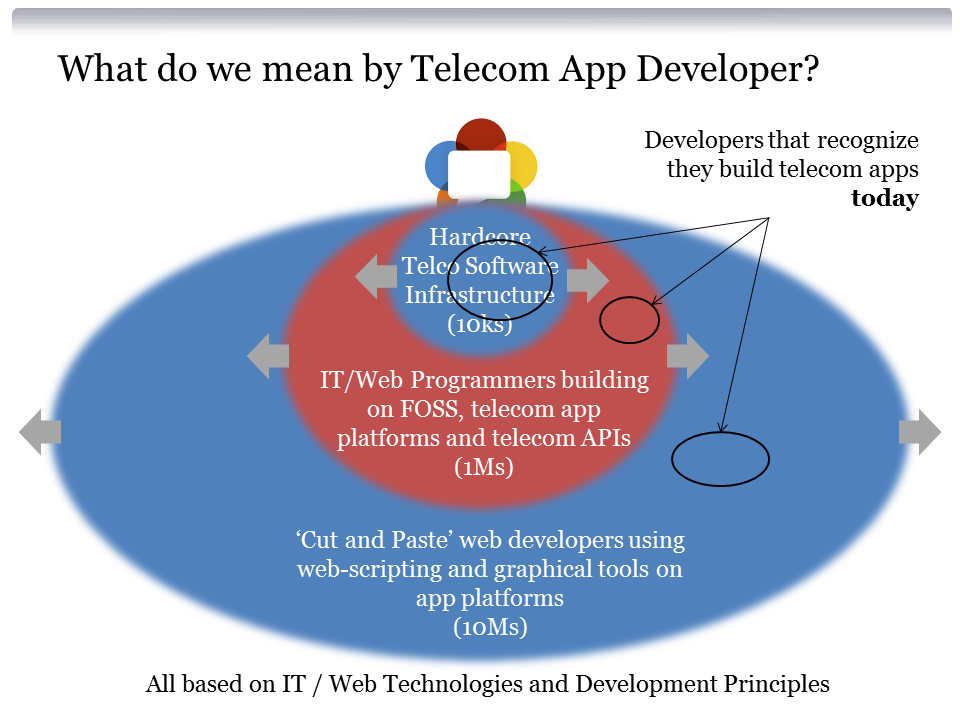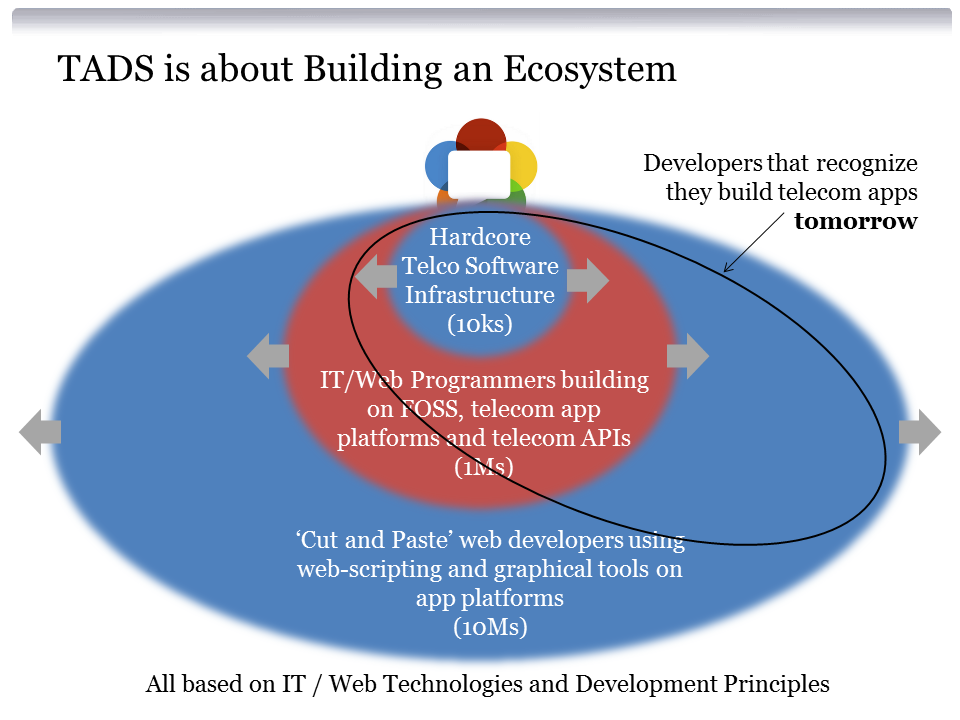Given the feedback received since the release of the TAD Manifesto and the responses to the TAD Questionnaires, Telecom application developers range from:
- Hardcore Telecom Application Developers building communications platforms and services on open source and proprietary platforms such as OpenCloud, Asterisk, Free Switch, Mobicents, Clearwater, etc.. These are the developers that understand re-origination, codec transcoding issues, and all the failure modes between the different communication networks. Some of these hardcore developers are building cloud communication platforms on either open source and/or their proprietary technology to make it easy for the next categories of developers to build telecom applications.
- IT/Web programmers looking to build application and services on communications platforms like Tropo, Twilio, APIdaze, RestComm, OnMobile, etc. Telecom networks are reliable and secure, communications just works. For businesses this matters, matters critically. So they need experts to manage away the complexity of telecoms so they can focus on adding telecoms functionality to their business processes, or applications, or web-based services. Generally using APIs and application platforms.
- And finally there are a vast legion of ‘cut and paste’ web developers where web-scripting makes adding telecoms as simple as copying some code in your preferred language, making a few changes in the text fields, and as if by magic all telephones become accessible to your web-based application and services.
All the developers listed above come from the IT/Web side, not the telecoms side. From the few thousand hardcore developers building the infrastructure applications to the tens of millions of developers, some like myself, only capable of cut and paste programming but nonetheless building cool stuff. WebRTC underlies all these platforms as it extends communications to any web-connected device.
All these developers are interdependent, but today operate within their business silos, see below. They are all solving the same problems just at different levels of abstraction. TADS is about bringing all these developers together to help build an TAD ecosystem, see below. By sharing experiences the hardcore developers can discover new use cases and capabilities they can expose; and innovative cut and paste programmers can discover new tools, tricks and techniques to create new experiences. This is how web development works, and we simply need to copy this in telecom application development, this is the point of TADS.
Where do Telcos play in this ecosystem? Its really up to them, they are no longer the gatekeepers, no longer king of the hill. Being part of this ecosystem means it grows far faster, which is good for all involved, but telco involvement is no longer a precondition for success. Telcos could end up simply networks of last resort for commoditized connectivity. As ARPUs decline, new communication services are the only way telcos can maintain revenues as mobile data revenues are not offsetting the communications service decline. Its going to require telcos to “rearrange the furniture in their mind” to accept this emerging reality, its a change only a few will be able to make, those that do will grow, those that can not will have a less certain future.


